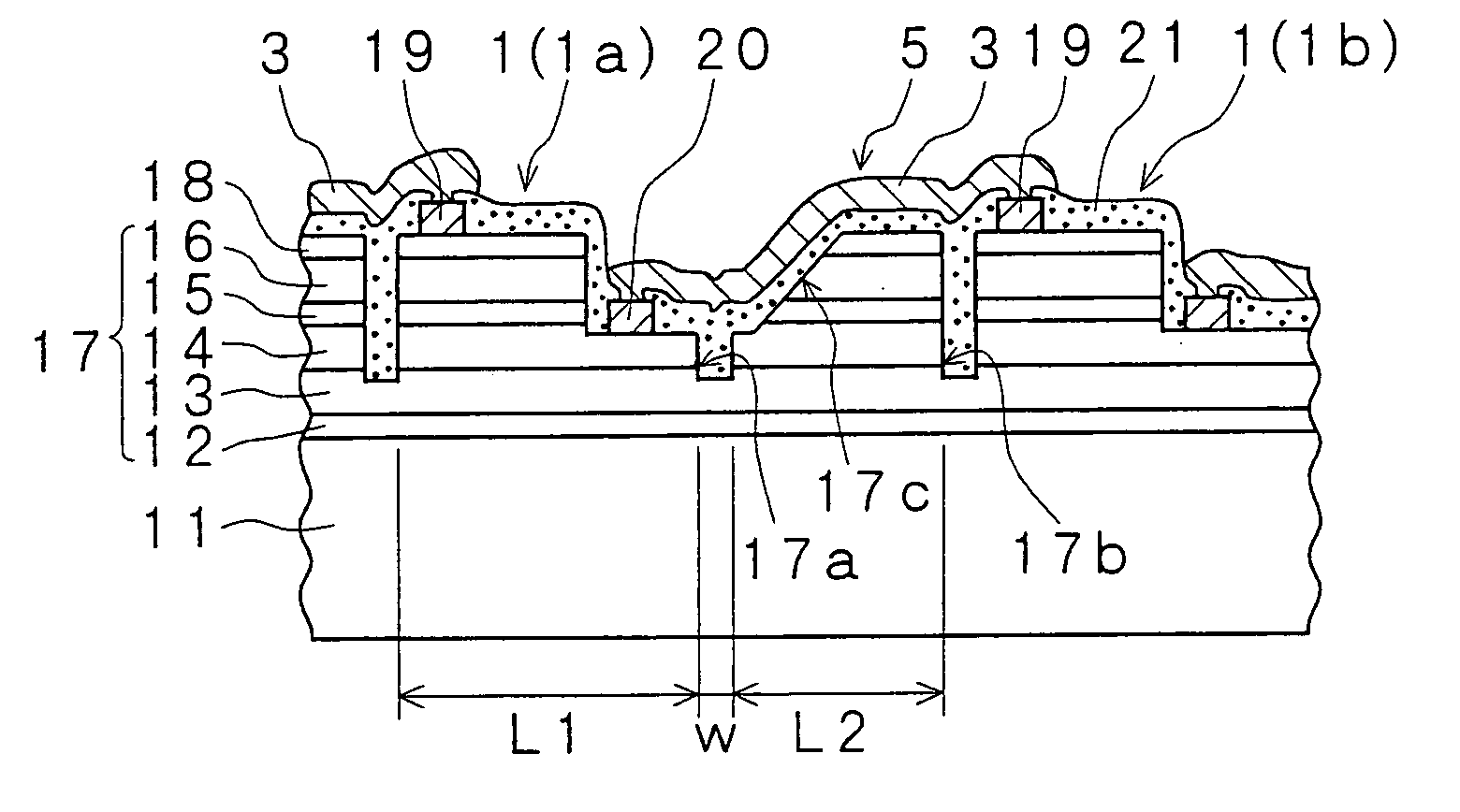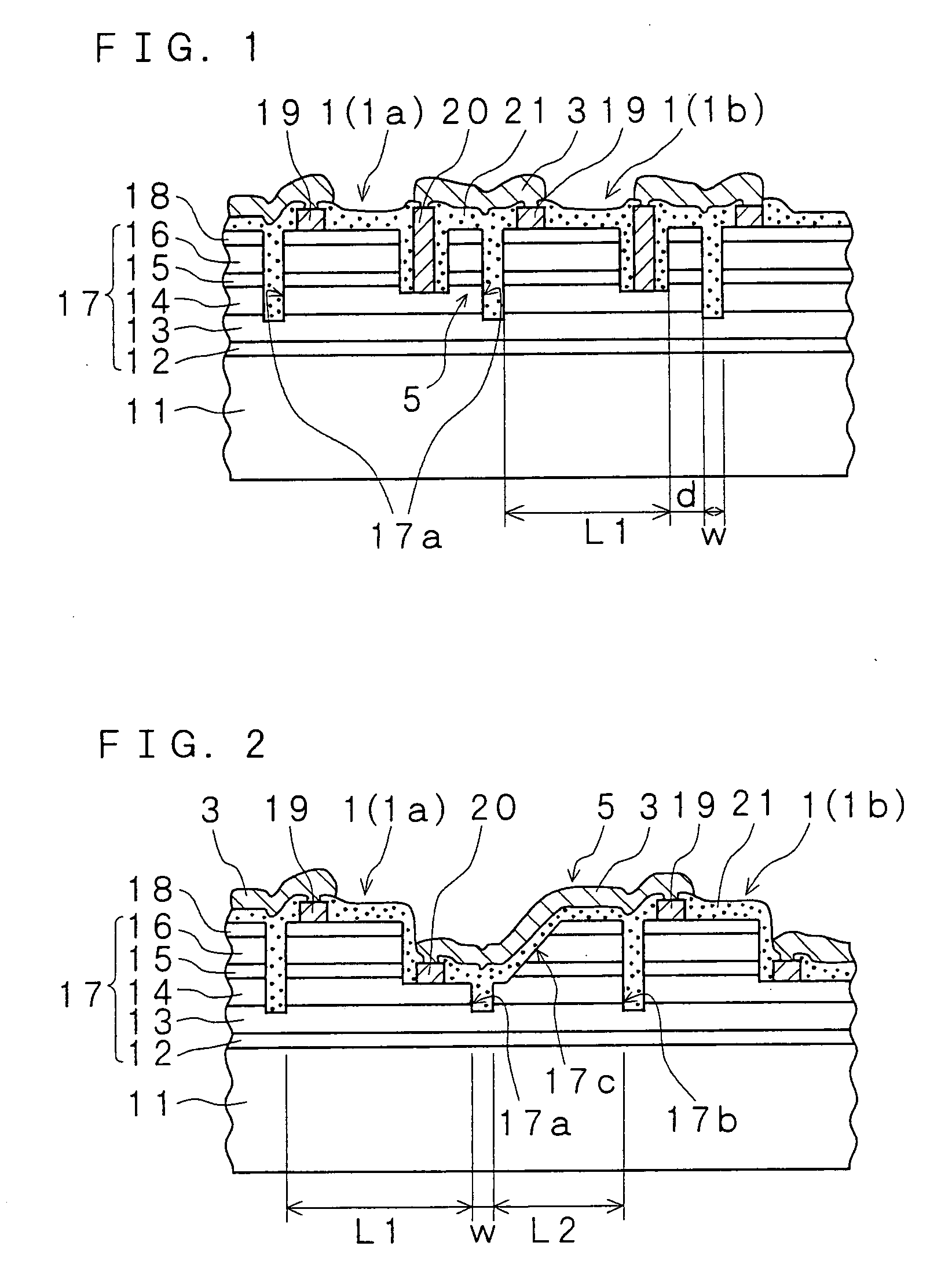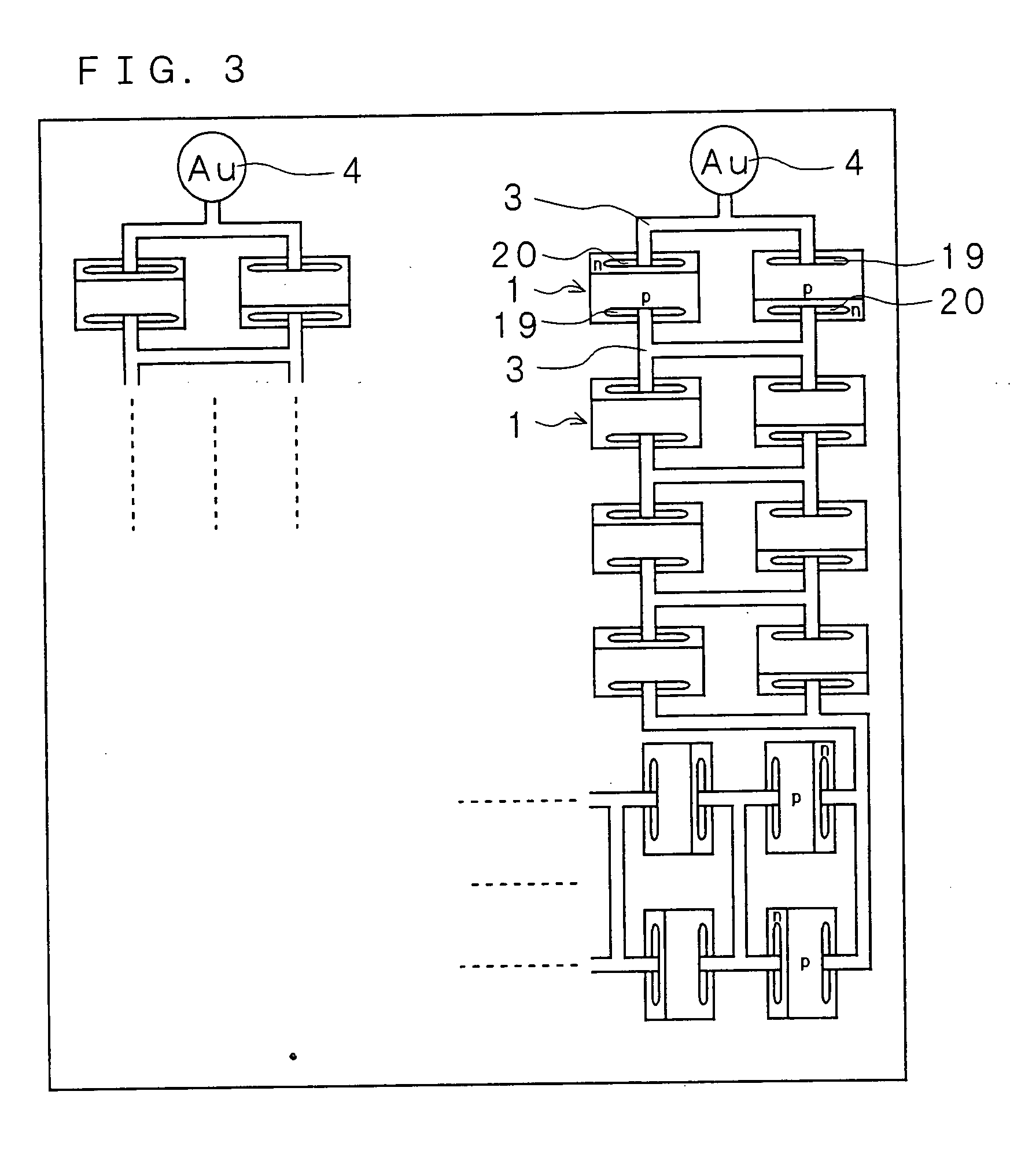Semiconductor Light Emitting Device
a technology of light-emitting devices and semiconductors, which is applied in the direction of semiconductor devices, basic electric elements, electrical equipment, etc., can solve the problems of increasing seriousness and the inability of all light-emitting units connected to a part of a series connection to operate, and achieve the effect of easy breakag
- Summary
- Abstract
- Description
- Claims
- Application Information
AI Technical Summary
Benefits of technology
Problems solved by technology
Method used
Image
Examples
Embodiment Construction
[0061] An explanation will be given below of a semiconductor light emitting device according to the present invention in reference to the drawings. As an explanatory cross-sectional view of one embodiment is shown, the semiconductor light emitting device according to the present invention is formed by forming a semiconductor lamination portion 17 on the substrate 11 by laminating semiconductor layers so as to form a light emitting layer, by forming a plurality of light emitting units 1 by separating the semiconductor lamination portion 17 electrically into a plurality of units 1, each of which has a pair of electric connecting portions (electrode 19 and 20) which are connected to a pair of conductivity type layers of the semiconductor lamination portion, respectively, and by connecting each of the plurality of light emitting units 1 in series and / or parallel with wiring films 3. In the present invention, a structure of electrically separating the plurality of light emitting units 1 ...
PUM
 Login to View More
Login to View More Abstract
Description
Claims
Application Information
 Login to View More
Login to View More - R&D
- Intellectual Property
- Life Sciences
- Materials
- Tech Scout
- Unparalleled Data Quality
- Higher Quality Content
- 60% Fewer Hallucinations
Browse by: Latest US Patents, China's latest patents, Technical Efficacy Thesaurus, Application Domain, Technology Topic, Popular Technical Reports.
© 2025 PatSnap. All rights reserved.Legal|Privacy policy|Modern Slavery Act Transparency Statement|Sitemap|About US| Contact US: help@patsnap.com



